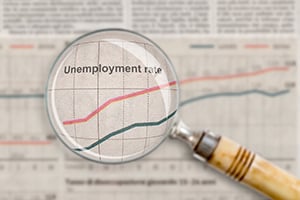 As we wait for tomorrow’s jobs report, there is a lot of angst in the air. One of the most predicted recessions in history is very likely to hit this year. The manufacturing business sentiment survey yesterday was down, seemingly confirming that outcome. The Fed is looking to substantially weaken the labor market, in search of lower inflation, and according to the meeting notes released yesterday, is going to keep raising rates until that happens. All of the signs are that the jobs market will weaken significantly. But the question remains, is the job market actually going to weaken?
As we wait for tomorrow’s jobs report, there is a lot of angst in the air. One of the most predicted recessions in history is very likely to hit this year. The manufacturing business sentiment survey yesterday was down, seemingly confirming that outcome. The Fed is looking to substantially weaken the labor market, in search of lower inflation, and according to the meeting notes released yesterday, is going to keep raising rates until that happens. All of the signs are that the jobs market will weaken significantly. But the question remains, is the job market actually going to weaken?
Signs Point to No
Expectations are for no, not really. The consensus forecast for tomorrow is for a gain of 200,000 jobs, which would be in line with the past two months and pretty strong historically. If we get that number, it would signal continued healthy growth. This would be good for the economy and consumer spending, but it would be bad for inflation and the Fed’s rate hikes.
What we know so far signals, on balance, a stronger report than expected. The ADP employment report came in at 235,000, substantially better than the prior month at 127,000 and expectations at 150,000. Over the past several months, the official number has beaten the ADP number, usually by a lot. Layoffs, despite the tech industry headlines, remain very low overall, and the voluntary quit rate (a great indicator of the strength of the labor market) ticked up again even as job openings remain well above pre-pandemic highs. By all of these signs, we can expect a substantial beat tomorrow.
Against that, the household survey has indicated a flat labor market for the past six months, while the number of people claiming unemployment continues to rise. We may see a smaller-than-expected increase, given those concerns. But the bulk of the evidence is saying that even if we do get a miss, it will likely be small and still leave job growth at a healthy level. While there are reasons to be cautious here, the balance of the evidence is that the labor market remains quite strong, and the risks to the jobs report are to the upside.
What Does That Mean?
With expectations for 200,000 new jobs, we should not be surprised by something above that, perhaps well above. The unemployment rate should stay steady at a historically very low 3.8 percent or tick down a notch, while wage growth should also remain at recent strong levels. If that happens, expect the Fed to keep its rate-raising bias and for the markets to react negatively.
If job growth does come in lower than expected, however, markets might well see that as a positive. Even lower job growth would still be healthy by historical standards and would provide enough income to support continued growth in consumer spending, even as the Fed might feel less pressure on inflation.
The Real Question
The real question for investors tomorrow will be whether the economy continues to grow faster than expected—and faster than the Fed wants—or will it stay in a sweeter spot with continued moderate growth. The data suggests the former.


 Print
Print

